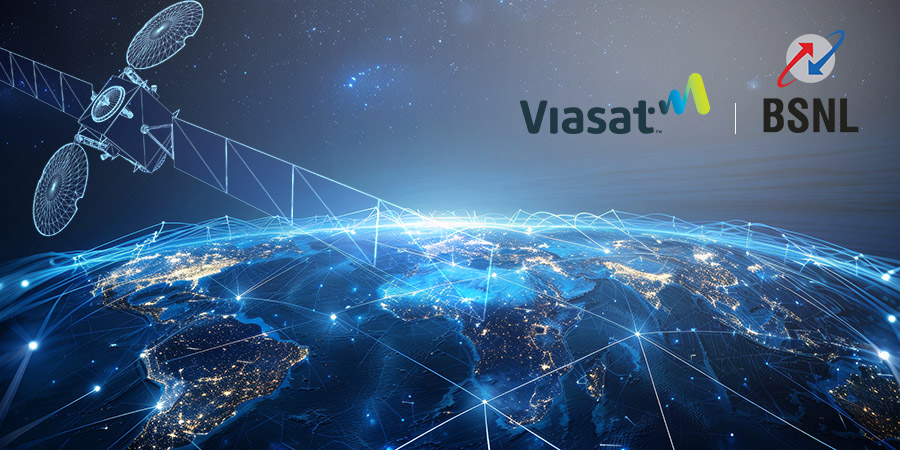Viasat, Inc. has announced its first successful demonstration of direct-to-device (D2D) satellite connectivity in India, showcasing satellite-enabled, two-way messaging services in collaboration with BSNL.
The company is actively partnering with BSNL and others to drive the global expansion of satellite services for consumer and IoT devices.
Two-Way, SOS Messaging
At the India Mobile Congress, Viasat demonstrated two-way and SOS messaging using a commercial Android smartphone designed for non-terrestrial network (NTN) connectivity. The messages were successfully transmitted across approximately 36,000 km to one of Viasat's geostationary L-band satellites, confirming the technical feasibility of satellite services for cell phone connectivity for Indian consumers and businesses utilizing Viasat's satellite network.
Phones, smartwatches, vehicles, industrial machinery, and transport operators can now seamlessly connect to both terrestrial and satellite networks. This advancement enables devices to stay connected from almost any location without the need for specialized hardware for satellite connections.
The technology adheres to the latest global mobile 3GPP Release-17 standards, which are being adopted by satellite operators, mobile network providers, and manufacturers of handsets and chipsets.
Viasat boasts a strong legacy in satellite safety services, including its role as the backbone of the Global Maritime Distress and Safety Service (GMDSS) with over 120,000 connected safety terminals. It also supports flight deck safety communications for more than 12,000 aircraft. These dependable safety communications are delivered through Viasat's licensed L-band spectrum.
Viasat is also a founding member of the Mobile Satellite Services Association (MSSA), a non-profit industry organization dedicated to advancing open interoperable architectures and standards for the integration of terrestrial and non-terrestrial network (NTN) services. This initiative enables mobile network operators to utilize existing licensed satellite spectrum, which helps to prevent the congestion of valuable cellular spectrum and streamlines the regulatory approval processes.
Related: Netcracker's Digital Satellite Solution Propels Satellite Industry Forward
D2D in India
Sandeep Moorthy, Chief Technical Officer at Viasat, is excited by the prospect of direct-to-device technology in India, noting that it could help eliminate barriers to accessing satellite connectivity, especially in a country where millions lack reliable terrestrial services.
He mentioned that, in the future, direct-to-device technology could transform India's production and supply chains, making them more efficient, sustainable, and safer, while also supporting automotive applications to improve safety- and conditions-based maintenance.
Robert Jerard Ravi, Chairman and Managing Director, BSNL, said, "BSNL, in an exclusive partnership with Viasat, is proud to lead direct-to-device innovation. Today's successful demonstration, the first in India, showcases the potential to enhance direct communications for critical services, disaster recovery, and even rural connectivity across India using the BSNL network and Viasat's L-band satellite constellation."
Continue Reading:
Transformation Today: Improved Connectivity in India With 5G
Telecoms Role in Driving Progress Towards SDGs in India, Vietnam and Indonesia







